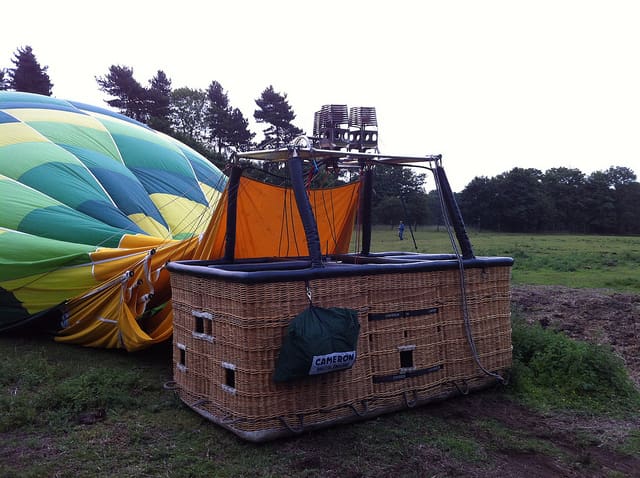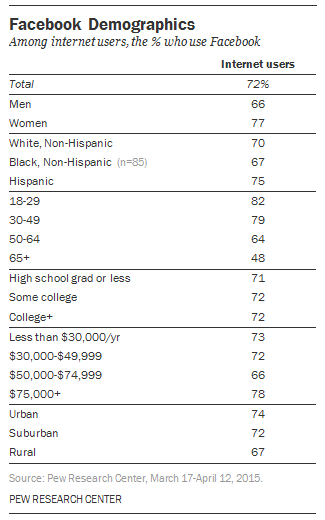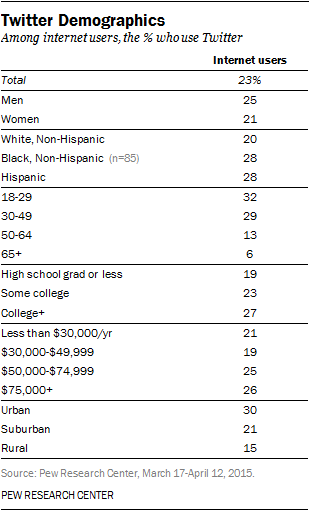Memorize These 6 Real Estate Marketing Strategies Before Selling a House
- Published on
-
 Charlotte Garden Contributing AuthorClose
Charlotte Garden Contributing AuthorClose Charlotte Garden Contributing Author
Charlotte Garden Contributing AuthorCharlotte is a writer and content strategist in Boston. She holds a B.A. in French and Creative Writing from Denison University and an M.B.A. from Columbia Business School. Her work can be seen in the New York Observer, The Wall Street Journal, Commitness to Fitness, and WriterAccess.
The internet has become one long tourist-trap for real estate marketing advice. A bunch of different websites sell practically the same strategies to dazed and confused newbie home sellers.
Sorry about that.
In an effort to clear the air and bring a little quality control to this cacophony, we set out to determine which real estate marketing strategies are actually valuable and which aren’t worth their weight in salt.

We used data from millions of transactions to separate value from rubbish. After all, generic real estate marketing strategies are the Eiffel Tower keychains of the internet — if made up of bad material, they both fall apart fast.
Common Advice for Selling Your Home: Not All it’s Cracked Up to Be
As real estate industry writers and strategists, we scour the internet daily to find blog posts, articles, studies — you name it — to see what our peers are saying. Much of what we find certainly means well, but it’s repetitive, unspecific, and it’s the type of advice we’ve heard for so long, we’re not sure it’s still true.
Here are some of the oft-touted real estate marketing strategies we’re referring to:
- The best time to put your home on the market is spring
- List your home below comp prices in order to ignite a bidding war
- Lighting is the most important factor when taking photos of your house
- Open houses sell homes
- Curb appeal is important, but doesn’t really affect price
- Throwing in some personal property can help close the deal
We put our detective hats on to get to the bottom of these claims, and the results we found provide a pretty specific blueprint for sellers. You’ll want to take notes.
We’ll wait while you get a notebook or your notes app out….
…Back? Great, let’s begin.
Is there really a universal “Best Time to List Your Home for Sale?”
The Claim: List your home in spring, also known as the “on season.”
The Truth: Correct, but the real truth is a little more specific. Yes, you do want to strike while the iron (er, market) is hot, so to speak, but based on your home’s geographic location, your best window is a two- to four-week timeframe:
Nationally, the best time to list your home is March, with April and May following in second and third place, respectively.
However, we can get even more specific:
California:
San Francisco: May, followed by June and April.
San Diego: November, followed by December and February.
Colorado:
Denver: May, followed by June and April.
Aurora: October, followed by November and September.
Texas:
Houston: June, followed by May and March
Missouri:
Kansas City: July, followed by August and June
Georgia:
Atlanta: June, followed by July and November
Ohio:
Columbus: October, followed by November and June
Additionally, it’s not just the season that affects timing, but the day of the week as well. The best day of the week to put your home on the market is Thursday.

The reasoning here is that by Saturday — the most popular day of the week for house hunters — your home will have only been on the market for two days. By the next Saturday, it’ll have only been on the market for nine days. That single digit number can have a big impact on the psychology of buyers, who will be more likely to offer full price.
Deflate the Listing Price on Purpose? Really?!
The Claim: List your home below the comp price — it’ll look so attractive, potential buyers will bid it back up in bidding wars
The Truth: Sometimes true, but it completely depends on your location — not just state to state, but also town to town. “[It’s] sound advice for certain areas, but in San Antonio – no,” says top real estate agent Misty Wood. Wood consistently sells homes for 4% over the regional average. “We price them really close to the market analysis, because the buyer’s agent should be doing their job and telling them what to expect based on the market.”
You don’t want to inflate the list price either. In our Top Agent Insights survey, we identified over 100 top real estate agents with our proprietary algorithm and we asked them whether they would recommend initially pricing a home over the desired sale price in order to leave room for negotiations. 50% came out and said they just plain don’t recommend doing that.
Wood continues, “If I do get a bidding war it’s because of supply and demand, not price. Austin, on the other hand, gets into bidding wars every day, because of supply and demand, so it might be a good strategy there. But in San Antonio, if it’s too low, people will assume something’s wrong with it.”
Additionally, when it comes to list price, there’s another psychological tactic you can use to attract buyers. Make sure your home price ends with anything but a zero.
A study from Time Magazine proved that buyers perceive prices like $352,528 as a better deal than $350,000. In fact, one zero at the end of the price can lead to a loss in sale price of .72%, while two zeros bring it down .73%.
While that may not sound like much, if that was your home you listed for $350,000, would you want to sell it at a .73% loss putting it at $347,455?
We wouldn’t.

Real Estate Marketing Photos: Is Lighting Everything?
The Claim: Lighting is the most important factor when taking photos of your house
The Truth: Pictures are important, but they must be the right photos. Lighting is an essential factor, but not the only one. Wood’s team has a professional photographer take 50 high-definition, horizontal pictures, from which she chooses 25.
In the real estate listing itself, Wood recommends starting at the front (street-view) of the house and ending in the backyard to give potential buyers a complete story of the property.
In our ever more visual world, investing in high-quality photos taken by a professional real estate photographer is highly recommended based on their ability to attract buyers online.
Not only do professional real estate marketing photos generate 139% more clicks than similar listings, but listings with professional photos sell for $934 – $116,076 over similar listings. (Although these gains are only noticeable on properties selling for $300,000 and higher.)
In terms of time, homes with professional photos sell over 50% faster than homes without.
Social Media: Absolutely Necessary or Just Hype?
The Claim: Promoting your house on social media can sell it quicker.
The Truth: “This is the direction the industry is going,” according to Wood. She says that many people begin their search online to “save themselves from visiting homes they don’t want.”
Nowadays, 44% of home buyers find their new house online, and 80% of home buyers look online before they’ll even agree to go see a house.
However, just telling someone to go put their house on social media doesn’t necessarily help. What type of buyers are they trying to attract? Which channels should they use? A good real estate marketing strategy will account for these things.
Knowing the average age of a first time home buyer is 33 with a median income of just over $69,000, and the average age of repeat buyers is 53 with a median income of just under $99,000, we can make some very educated guesses about where to find them on social media:
Facebook = best bet
72% of adults are active on Facebook
Of active Facebook users, 70% log on daily, 43% log on several times a day.
Percent of online adults on Facebook ages 30-49: 79%
Percent of online adults on Facebook ages 50-64: 64%
Income: 72% of Facebook users have incomes over $75,000

Pinterest = gaining real momentum
31% of online adults use Pinterest
Of active Pinterest users, 27% visit daily
Percentage of Pinterest users who search on Pinterest instead of Google: 33%
Percent of Pinterest users ages 30-49: 28%
Percent of Pinterest users ages 50-64: 24%
Income: 64% have incomes over $75,000, and the average user has a household income of over $100,000.

Instagram = can’t hurt
28% of online adults use Instagram
Of active Instagram users, 59% use it daily.
Percent of Instagram users ages 30-49: 25%
Percent of Instagram users ages 50-64: 11%
Income: 52% of users have incomes over $50,000

Twitter = sure, but it shouldn’t be your only channel
23% of adults use Twitter.
60% of adults have made a purchase based on something they saw on Twitter
25% of Twitter users are 30-49 years of age.
13% of Twitter users are 50-64 years of age.
Income: 54% of Twitter users have incomes over $50,000

If listing a home on every channel sounds excessive to you, focus on Facebook. Make good use out of Facebook’s uber-targeted ad feature to narrow in on potential buyers. For example, if you know employees at a certain company will have to move to your area soon due to a relocation of their headquarters, target your ads at people who currently live near the old headquarters.
Curb Appeal: Nice to Have for Pictures and That’s All?
The Claim: Curb appeal is important, but doesn’t really affect price
The Truth: Curb appeal is indeed important, but yes, it can also affect price. Augmenting the quality of landscaping from average to excellent can add 6-7% to a home’s selling price.
Depending on where you live, upgrades to your landscaping can increase your home’s value anywhere between 5.5% to 12.7%.In other words, if your home is worth $300,000 without landscaping, it could sell for somewhere between $316,500 to $338,1000 with the right landscaping.

What are the best decisions you can make to improve curb appeal?
Add More Trees:
The 24-inch diameter red maple is the country’s most popular tree. It adds value to your home, while contributing towards energy savings — shade keeps your home cool in the summer, and they act as windbreakers in the winter, thus keeping your home warmer. The number of these trees your have on your property increases the value and savings, as long as they’re healthy and don’t have any dangerous limbs or roots.
Use Native Plants:
Not only do buyers like the look of plants that are native to the area — they are about 15% of the cost to maintain compared to non-indigenous greenery.
Include Large and Colorful Annuals:
Curb appeal in a competitive buyers market can have a big impact on price and sale time, according to a study by Virginia Tech. This advantage is especially true if your home is very similar to others in your neighborhood.
Having said all of that, we should let you know that Wood always tells her clients that simple is better. While impressive curb appeal can indeed fetch a higher sale price, appraisers don’t take it into account when they come up with the house’s worth.
Are Open Houses Worth It?
The Claim: Open Houses Sell Homes
The Truth: Nope, not true anymore. Open houses don’t sell homes like they may have in the past, but they are nonetheless still a very important part of the sales process. While 41% of home buyers attend an open house, data shows that only 9% of homes have sold through an open house or yard sign.
On top of that, when ran our Top Agent Insights survey and asked America’s top real estate agents what they thought about open houses, we found that 63% of real estate agents don’t always recommend them. 
The point of an open house is to allow potential home buyers to picture themselves living in your home. Wood emphasizes that if you do have an open house, proper staging is a must. The house must “look good, feel good, and smell good.” She suggests baking cookies the night before to share with guests. “People don’t buy homes,” Wood adds, “they buy lifestyles.”
Throw in a Little Extra Stuff to Seal the Deal? Only if Its Smart.
The Claim: Throw in some personal property to close the deal.
The Truth: Adding in appliances, televisions, or even furniture that the buyer loves can smooth over negotiations and give you more leverage to get the price you want, but you have to be smart about it.
Wood says that over the course of her career, buyers have asked to keep some bizarre things — her favorite example of this is the client who put an offer on a house that had 10 goats on the property. He requested the goats stay with the house in order to keep the greenery under control. The owners agreed.
While goats are great, nowadays smart home technology is making a big impact in home sales, and is expected to be a major factor in the future.
As of 2015, 28% of Americans had some sort of smart home technology installed in their homes. This number is only expected to rise, especially among parents and millennials.
CNET reported that parents with children under the age of 18 are twice as likely to have smart home technology in their house as people who don’t have children under the age of 18. Among millennials (18-34), 47% currently live with smart home technology, meaning it will be a big selling point in the future.
81% of those homeowners said they’d be more likely to buy a house that came with smart home technology already installed.
Think about that for a moment.
As more and more people bring smart home technology into their lives, the more it’ll be a very attractive perk for buyers.
If you’re selling to first-time home buyers or to families, your smart home technology may be more attractive to them than that big screen TV you’ve been on the fence about including.

Put the Good Real Estate Marketing Strategies to the Test
Hopefully at this point, you have a page full of notes on the right creative real estate marketing strategies for you personally.
For example, if you live in a great house for families that you think may be worth $400,000, your notebook may look something like this:
- Plan to put home on the market on a Thursday in the best month for your location.
- Hire a top real estate agent who knows the local market inside and out to find out if listing at $375,573 is advantageous, or if $405,504 will look more attractive to buyers. Either way, that last digit will never be zero.
- Hire a professional photographer. Choose 25 photos and make sure the agent organizes them from the front of the house to the back in the listing.
- Use social media accounts! Focus on Facebook, Pinterest and Instagram.
- Use professional staging to help buyers envision a lifestyle during the open house. Don’t get discouraged when a sale doesn’t directly result.
- Make sure healthy trees and colorful plants and flowers native to the area greet potential buyers.
- Leave smart home technology with the new buyer to sweeten the deal!
Now just be sure you don’t lose your notes app data between now and your closing date, and you’ll be ready to go!
Article Image Source: (Gabriel Santiago/ Unsplash)
